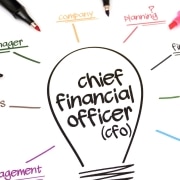SaaS Profitability: Determining a Break-Even Point for SaaS Startups
One of the first benchmarks for any business is reaching its break-even point. The break-even point is when you’re in a no profit, no loss situation. But you’ll encounter many obstacles on your road to break-even, particularly in competitive industries like software-as-a-service (SaaS). SaaS companies often face a long road to get to break-even. This can be achieved if you focus on three basic factors necessary to get you to SaaS profitability.

Estimating Costs and Revenue
Finding your break-even point requires estimating your costs and revenues. When making financial estimates, you need to be accurate as underestimating costs or overestimating revenues can lead to shortfalls.
Costs will, of course, depend on the specifics of your business. But here are some basics to start with:
- Rent
- Utilities
- Payroll
- Infrastructure, including: hosting; website design, development and maintenance; marketing
Figuring out the individual costs for each of these and adding them up gives you your basic costs.
Next, you’ll need to determine your pricing structure. Obviously, the structure will vary depending on industry and you’ll need to consider standards and competitors in your SaaS sector. In doing so, you also need to strike a balance between what will make you money and will not dissuade your potential customers from subscribing.
Finally, estimate your revenue. This will be based on projected monthly recurring revenue, or sometimes annual recurring revenue, and the rate of acquiring new customers. Once again, you need to be accurate and reasonable here. If you project a certain amount of revenue based on an estimated client base, this has to be realistic and you have to have a plan to acquire that many customers – all while also accounting for the costs of doing so.
Keeping an Eye on Churn Rate
When you are starting out, your customer base should experience growth well above your churn rate. But as your customer growth increases, your churn rate will do the same. The problem arises when your customer acquisition and churn rates are equal – that is, when you’re losing as many existing customers as you are acquiring new ones. The good news is that you have time to account for this, as there is a bit of a lag as the churn rate gets closer to the rate of customer acquisition.
The immediate thing to consider is whether you need to re-evaluate your pricing model. If it’s too high, it could be driving clients away. Of course, pricing isn’t the only cause of churn. You need to analyze other elements of customer satisfaction, including customer service, satisfaction with your product, etc. On the flip side, you should consider whether you are being active enough in trying to acquire new customers. This involves putting more revenue into advertising, marketing and sales.
Understanding Customer Acquisition Cost
The problem with trying to acquire new customers is that it can come at a cost. This is why it’s important to consider your customer acquisition cost (CAC) – the amount of money you put into marketing, advertising, sales, and other avenues to acquire leads and convert them to customers. Calculating this is important. Customer acquisition can look great on its own but if your churn rate and CAC are high, you aren’t getting close to your break-even point let alone making a profit, which can deter investors. Ultimately, you need to calculate your CAC and the lifetime customer value (LTV).
While a textbook response might suggest that your LTV to CAC ratio should be higher than 3:1, this isn’t always the case at every stage of your growth process. In fact, your initial CAC costs may be extremely high, but this can be worth it if you are trying to establish your brand by acquiring high value customers so that others will follow. Netting a customer who can directly or indirectly influence others to become customers may be extremely expensive on its own, but the cost of the single customer is worth the extra customers who come along because of name recognition. Likewise, you need to consider other factors, like the total value and duration of the contract. While in some SaaS fields, contracts may be relatively small (e.g. $50 per month for basic software) in others they could be significantly higher value and duration (e.g. $50,000 per year for cybersecurity software). Higher value and duration can often justify a higher CAC.
NOVAA’s Fractional CFO Services for Forecasting SaaS Startup Profitability
SaaS companies often try to reach break-even or hit profitability on their own and only seek professional advice when they struggle. This can involve processes of trial and error around estimating costs and revenues, pricing, and monitoring important analytics such as churn rates and customer acquisition costs. Accurately forecasting your company’s road to break-even, and analyzing your performance along the way, requires experienced professionals in the Chief Financial Officer (CFO) role.
NOVAA offers fractional CFO services for SaaS companies at all levels, from startups to established companies in the field. Our goal is to help you not only break-even but turn into a profitable SaaS company. In this role, we view ourselves as part of your team, taking a hands-on approach in working with you to accurately forecast expected costs and revenue months or years into the future. To do this, we utilize advanced business intelligence software to provide accurate metrics to help you determine what is and isn’t working. This begins with assessing your pricing model, in relation to your margins and industry standards.
But pricing models aren’t the only thing that can help your company. We also analyze other key performance indicators and projections, including churn rates and CAC, with an emphasis on isolating variances and why they occur, as well as seeing your performance indicators in relation to other companies in the industry. These can help to assess your overall operation to see what other costs can be brought down to aid in your growth to break-even and profitability.
For more information on NOVAA’s fractional CFO services or how to determine the break-even point for your SaaS company, book a consultation.











